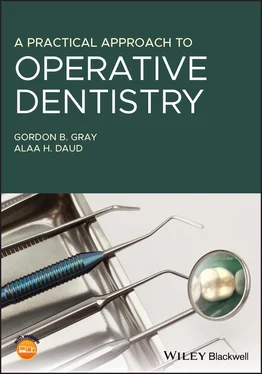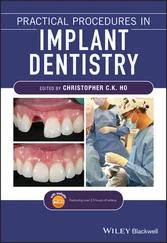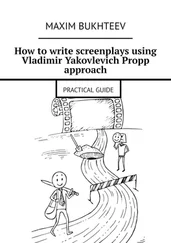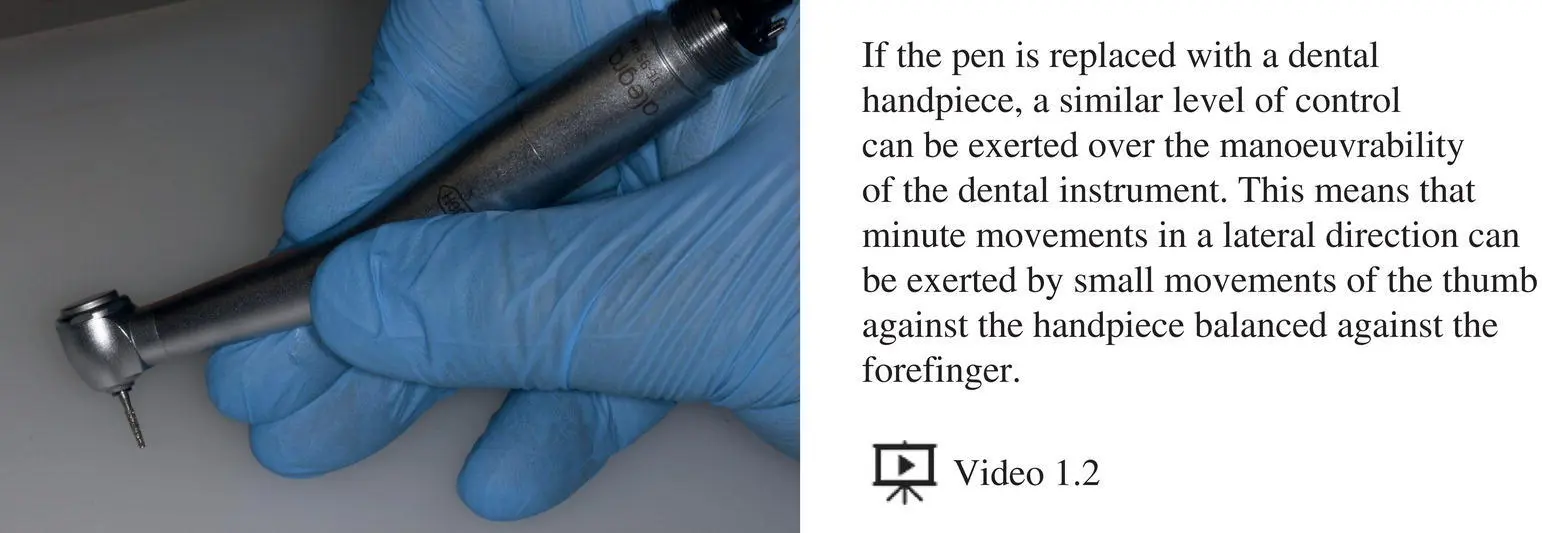
Figure 1.6 When a handpiece is substituted for the pen, maximum control of the instrument can be used.
It is important that the operator learns to control the handpieces to prevent hard and soft tissue trauma (see Figures 1.5and 1.6). This can be prevented by mastering
Grip on the handpiece
Finger rest positioning on hard non‐movable tissues
The fine control of the handpiece using the pen grip requires that a stable finger rest is obtained onto immovable tissue such as adjacent or contralateral teeth or hard tissues. It is really important that a finger rest is never placed on mobile soft tissues (see Figure 1.7).
When placing restorative material in a cavity where the proximal wall has been lost due to caries or fracture, the subsequent aim is to restore the contact area and marginal ridge area to prevent food packing. In addition, it is important to have a smooth junction cervically between the restorative material and the tooth surface. However, the cavity does not have walls surrounding it on all sides, and it is necessary to provide one so that the restorative material can be placed. This is done using a matrix band: a clear polyether band anteriorly or a stainless steel band posteriorly. The functions of this matrix band are:
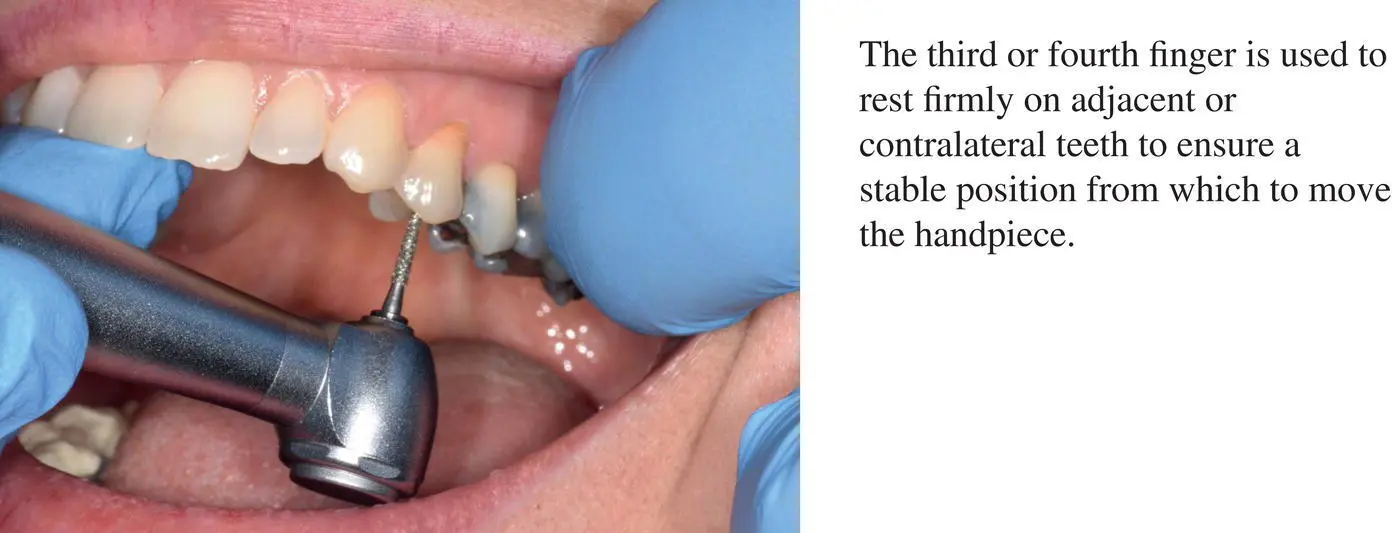
Figure 1.7 It is important that a finger rest is employed when a handpiece is used in the mouth. The finger should be rested on an immovable object, such as adjacent teeth.
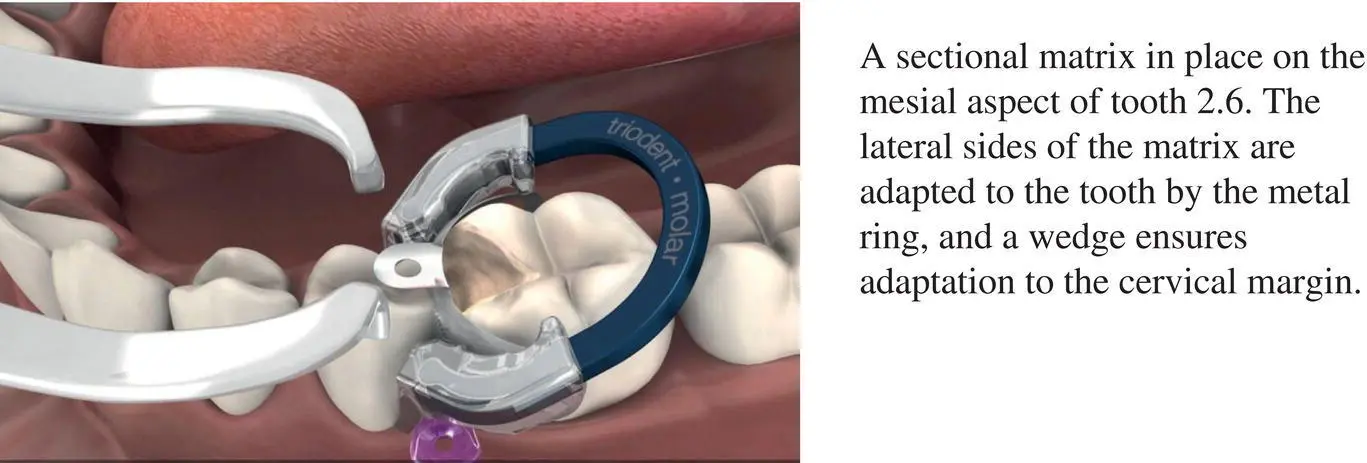
Figure 1.8 A modern version of a sectional matrix band that is held in place with a spring ring.
To retain the filling material in the cavity during placement
To provide a smooth and close adaptation of the filling material to the surrounding tooth
To re‐establish the contact point and contour of the tooth
There are three types of matrices:
1 Where the band encircles the tooth and is retained by a holder on the buccal or lingual side. The bands held in these holders or retainers can be straight, curved, or contoured. This design allows a firm adaptation to the tooth, e.g. Siqveland or Tofflemire.
2 Where the band encircles only three‐quarters of the tooth and the retainer has sharp jaws that impinge into the other tooth embrasure. This type of matrix system is useful when contact points are very tight and resist placement of a matrix bond through the contact, e.g. Ivory or sectional matrix.A modern version of this matrix is the newer sectional matrix systems (see Figure 1.8) where a shaped band is inserted and held in place with a metal ring whose sides press against the band and tooth structure to ensure its close adaptation, e.g. Palodent System.
3 In the third type of matrix, there is no retainer. The matrix is held in position using a wedge or may consist of a spring mechanism. The latter has the advantage that no retainer is required and can be used on badly broken down teeth, e.g. AutoMatrix System (see Figures 1.9– 1.12).
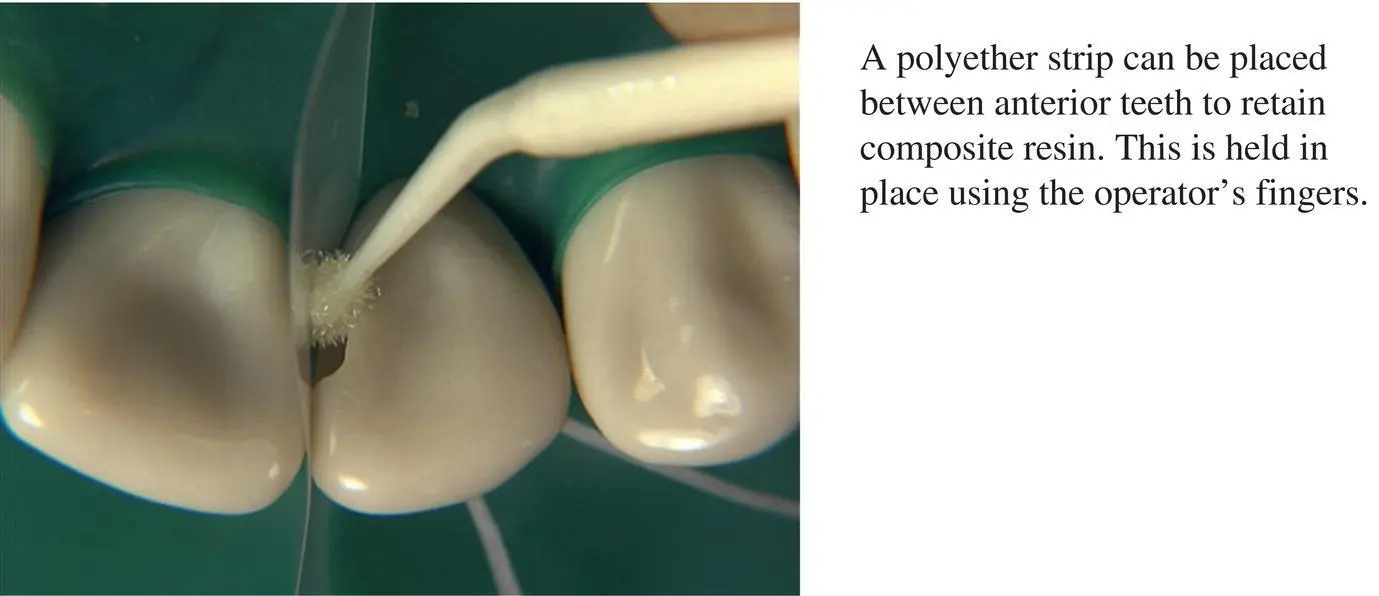
Figure 1.9 A clear polyether matrix strip can be used when anterior teeth are being restored with composite resin.

Figure 1.10A metal AutoMatrix can be useful when restoring very heavily broken down teeth and avoids the presence of a matrix holder in the mouth.
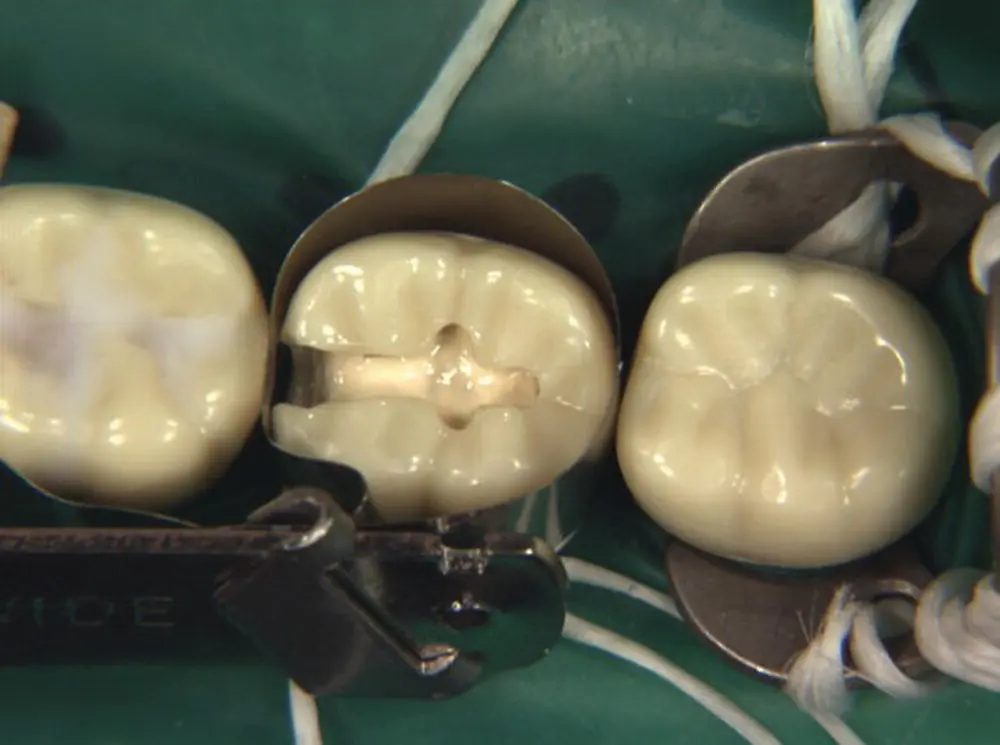
Figure 1.11A Siqveland matrix band and holder in place on tooth 37. The stages of assembling this matrix are shown in the accompanying video in chapter 6.
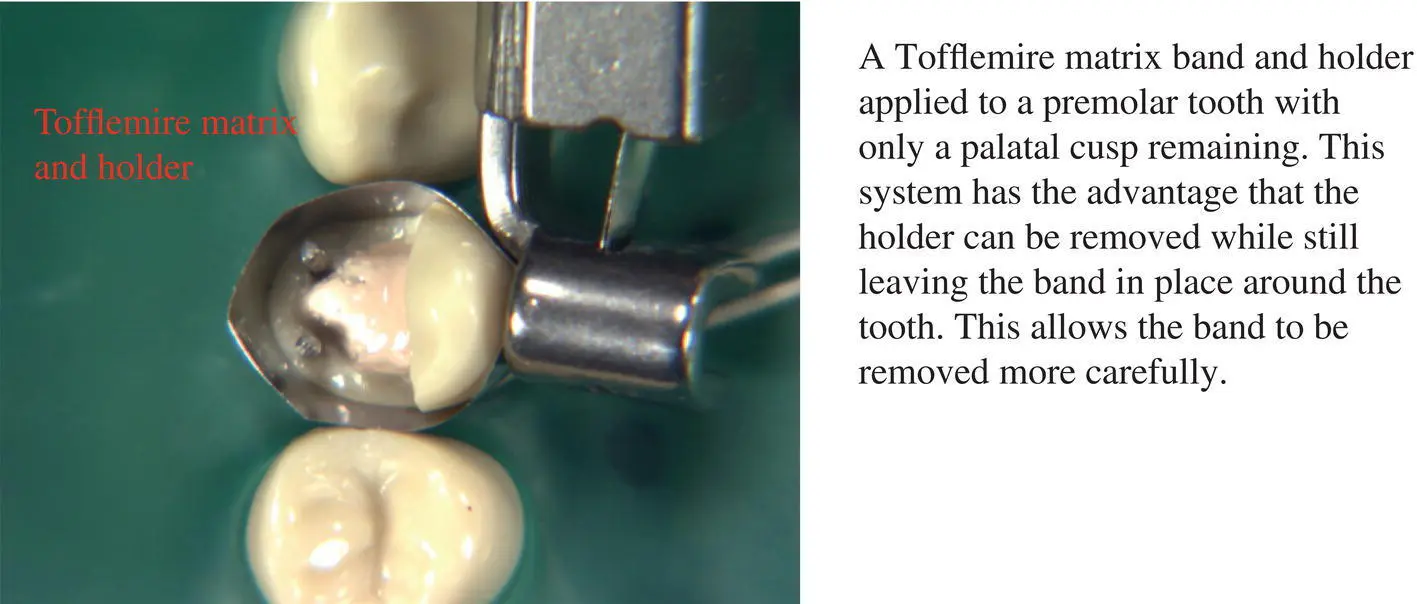
Figure 1.12 A Tofflemire matrix band and holder in position on tooth 1.4, which has lost its buccal cusp. The holder can be removed from band after the restoration has been placed. This allows removal of the band more easily from around the tooth.
1 Bartolomucci Boyd, L.R. (2015). Dental instruments: a pocket guide. St. Louis, Mo: Elsevier/Saunders.
Конец ознакомительного фрагмента.
Текст предоставлен ООО «ЛитРес».
Прочитайте эту книгу целиком, купив полную легальную версию на ЛитРес.
Безопасно оплатить книгу можно банковской картой Visa, MasterCard, Maestro, со счета мобильного телефона, с платежного терминала, в салоне МТС или Связной, через PayPal, WebMoney, Яндекс.Деньги, QIWI Кошелек, бонусными картами или другим удобным Вам способом.
